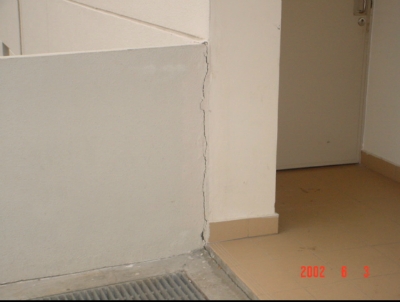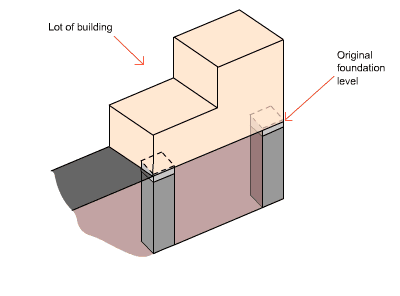Case 1
- Introduction
- Causes of Defects
- Good Practices
- Standards
- Maintenance and Diagnostics
- Remedial
- Similar Cases
- References


Introduction
Cracking Due To Differential Movement Of Structures
Type of Building: Institutional
Plaster provides a protective layer on building exteriors and is traditionally produced by blending cement, sand, water, and lime together. The number of plaster coats applied depends on the type of wall. The correct plaster thickness is vital for both a visually appealing finish and the wall’s overall durability and performance. Modern ready-mixed options have demonstrated superior qualities in terms of adhesion, durability, and water resistance. Some of the more commonly used solutions include:
- Gypsum plaster – Lightweight, fire-resistant, and quick-drying, it is ideal for repairing imperfections and renovations.
- Cement plaster – Known for its durability and weather resistance, this option is popular for exterior walls. It is typically paint-friendly and suitable for texturing.
- Acrylic plaster – This flexible and waterproof alternative is perfect for damp areas like bathrooms and laundry rooms. Its primary advantage is that it comes pre-coloured and is suitable for painting.
Cracks in plaster usually happens when the wall substrate and plaster cannot structurally moved together. With differential movement and plaster being a thick layer which is not elastic by nature, cracks in plaster take place. If the cracks in the plastering correspond with cracks or deterioration of the wall substrates, it is likely that these are the roots of the defect and the cause of the cracking of the walls should be ascertained. For cases like this, the concealed substrate deterioration or defects (e.g. cracks or delamination), should first be addressed.
Movement of the structural backing wall upon which a plastering is applied may take various forms and may be due to a variety of causes, according to the nature of the substrate.
Shrinkage resulting from the initial drying out is perhaps the most common cause. Subsequent movement wetting and drying of the substrate during the life of the building may also result in dimensional changes.
In the picture, cracking of plaster occurs at the centre between 2 parts of the buildings. The crack stretches vertically across the length of the wall.
See “Concrete Cracking” for more details.